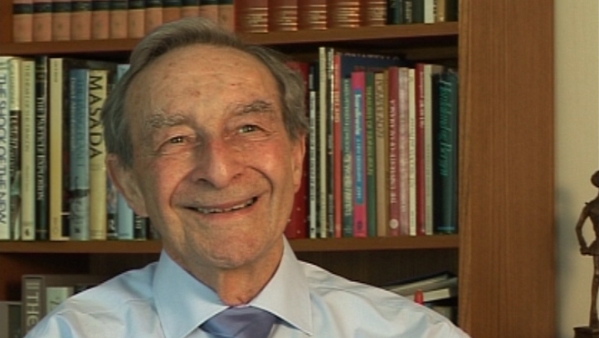NEXT STORY

One of the first NMR spectrometers
RELATED STORIES

NEXT STORY

One of the first NMR spectrometers
RELATED STORIES


|
Views | Duration | |
|---|---|---|---|
| 131. Education in Chemistry journal | 35 | 01:20 | |
| 132. Patterns of the invisible | 36 | 00:59 | |
| 133. The astounding rate of advance in chemistry | 40 | 01:14 | |
| 134. Doing research as well as teaching students | 33 | 00:47 | |
| 135. Where did my chemistry research funding come from? | 34 | 01:45 | |
| 136. Dr Tadyon’s generous donation | 30 | 02:36 | |
| 137. One of the first NMR spectrometers | 40 | 01:16 | |
| 138. Our creative group | 38 | 00:50 | |
| 139. Working on iodine pentafluoride | 45 | 00:44 | |
| 140. A superb chief technician: Jim Smith | 41 | 01:38 |


We were again lucky to get funding from an unlikely source by a gentleman called Dr Tadyon, and I mention him by name because he impressed me considerably. He had heard of me and he was making a far infrared spectrometer at a time when there weren’t far infrared spectrometers. There were the normal range, which were done by Perkin Elmer and others, but not the far infrared and as we were interested in heavy atoms like gallium, indium, thallium, bromine, the vibration frequencies were in the far infrared. So it was necessary to get an instrument to do that. Tadyon had developed one of these instruments but it was very expensive, and I went to him and I said, ‘Well, look, we want one of these instruments but frankly we can’t pay for it’. And he said, ‘Well, let’s go out to lunch and we’ll talk about it’. So he asked about what I’d done; the thing that turned him on, interestingly, was that I had done my degree part-time and that I’d supported myself in going through university and then done research and then come over here on scholarships and so forth, and he said, ‘That mirrors my experience’. He said, ‘I would not be where I am now if I hadn’t had help from people who sponsored me when I was young. If you want money, I’m not a big firm, but I will give you one of my instruments’. And so we had the instrument, and Brian Straughan who came with me – though he had not previously been one of my students – he came with me to a demonstrator post in Newcastle and he set that up. And then I went back to Tadyon and, shamelessly, said, ‘Well, it’s a marvellous instrument, but we need a technician. And so he gave me the money to support a junior technician to run the far infrared spectrometer. So that’s an interesting case study of chickens coming home or eggs hatching, whatever simile one likes to use. It was a very heart-warming experience and he was certainly enormously helpful.
Norman Greenwood (1925-2012) was born in Australia and graduated from Melbourne University before going to Cambridge. His wide-ranging research in inorganic and structural chemistry made major advances in the chemistry of boron hydrides and other main-group element compounds. He also pioneered the application of Mössbauer spectroscopy to problems in chemistry. He was a prolific writer and inspirational lecturer on chemical and educational themes, and held numerous visiting professorships throughout the world.
Title: Dr Tadyon’s generous donation
Listeners: Brian Johnson
Professor Brian FG Johnson FRS, FRSE, FRS Chem, FAcad Eu, FAS. Professor of Inorganic Chemistry University of Edinburgh 1991-1995, Professor of Inorganic Chemistry University of Cambridge 1995-2005, Master Fitzwilliam College Cambridge 1999-2005. Research interests include studies of transition metal carbonyls, organometallic chemistry, nano- particles and homogeneous catalysis. Professor Johnson is the author of over 1000 research articles and papers.
Tags: Perkin Elmer, Newcastle University, Dr Tadyon, Brian Straughan
Duration: 2 minutes, 36 seconds
Date story recorded: May 2011
Date story went live: 25 November 2011